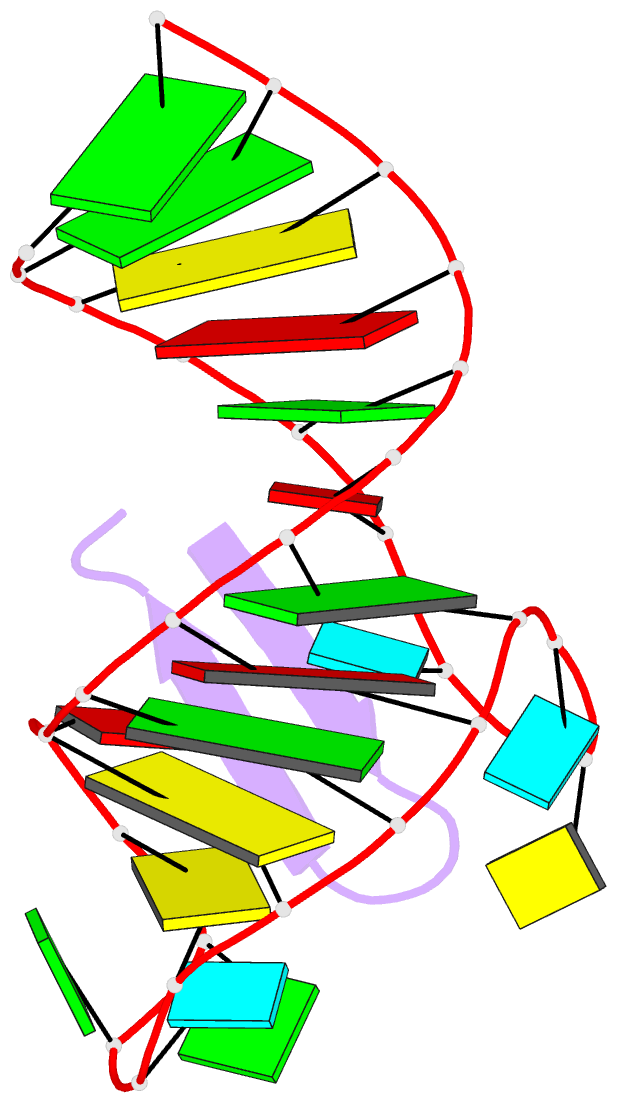Summary information and primary citation
- PDB-id
- 6d2u; SNAP-derived features in text and JSON formats;
DNAproDB
- Class
- peptide-RNA
- Method
- NMR
- Summary
- Solution structure of a ultra-high affinity macrocycle bound to hiv-1 tar RNA
- Reference
- Shortridge MD, Wille PT, Jones AN, Davidson A, Bogdanovic J, Arts E, Karn J, Robinson JA, Varani G (2019): "An ultra-high affinity ligand of HIV-1 TAR reveals the RNA structure recognized by P-TEFb." Nucleic Acids Res., 47, 1523-1531. doi: 10.1093/nar/gky1197.
- Abstract
- The HIV-1 trans-activator protein Tat binds the trans-activation response element (TAR) to facilitate recruitment of the super elongation complex (SEC) to enhance transcription of the integrated pro-viral genome. The Tat-TAR interaction is critical for viral replication and the emergence of the virus from the latent state, therefore, inhibiting this interaction has long been pursued to discover new anti-viral or latency reversal agents. However, discovering active compounds that directly target RNA with high affinity and selectivity remains a significant challenge; limiting pre-clinical development. Here, we report the rational design of a macrocyclic peptide mimic of the arginine rich motif of Tat, which binds to TAR with low pM affinity and 100-fold selectivity against closely homologous RNAs. Despite these unprecedented binding properties, the new ligand (JB181) only moderately inhibits Tat-dependent reactivation in cells and recruitment of positive transcription elongation factor (P-TEFb) to TAR. The NMR structure of the JB181-TAR complex revealed that the ligand induces a structure in the TAR loop that closely mimics the P-TEFb/Tat1:57/AFF4/TAR complex. These results strongly suggest that high-affinity ligands which bind the UCU bulge are not likely to inhibit recruitment of the SEC and suggest that targeting of the TAR loop will be an essential feature of effective Tat inhibitors.





